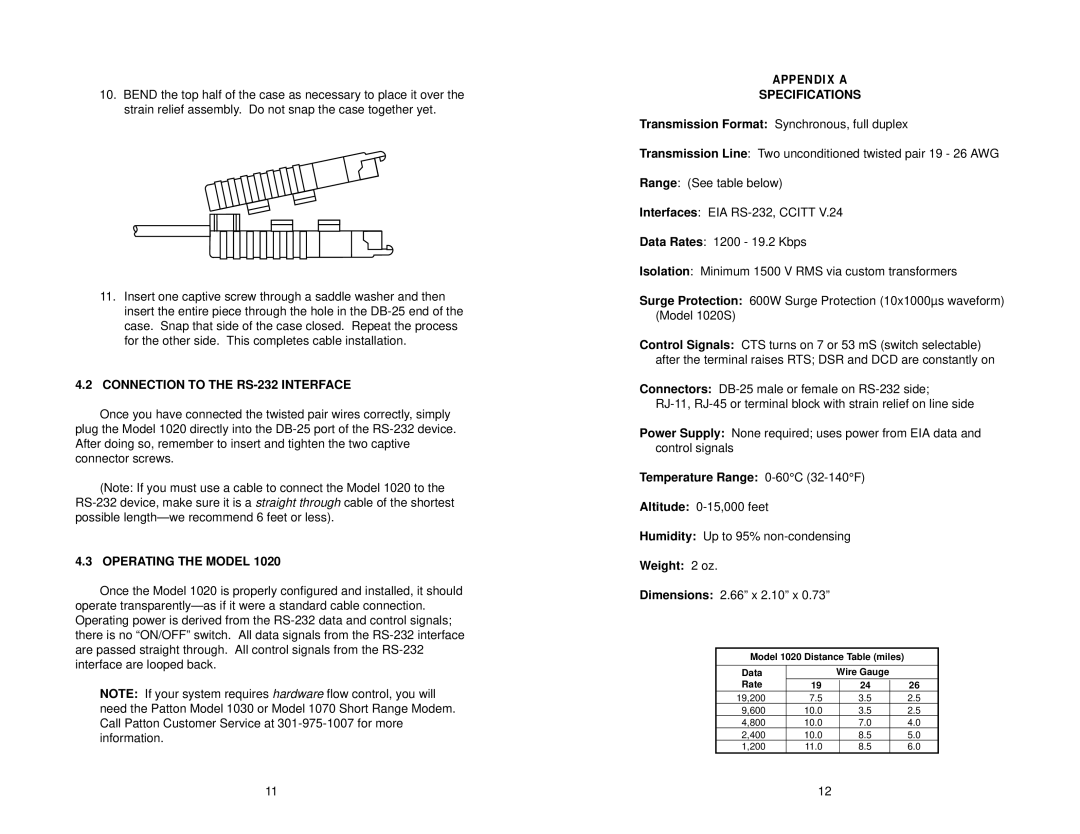1020, 1020S specifications
The Patton Electronics 1020S and 1020 are advanced, highly regarded solutions for those looking to enhance their network connectivity over various media types, particularly in the telecommunications and data transmission sectors. These versatile devices serve to bridge technologies, ensuring seamless communication between different network protocols.The main feature of both the 1020S and 1020 models is their robust serial-to-Ethernet capabilities. This functionality allows users to connect legacy serial devices to modern Ethernet networks, enabling them to take advantage of contemporary networking technologies without the need for extensive hardware overhauls. This aspect is particularly beneficial for industries with longstanding investments in serial devices, allowing for greater longevity and utility without significant retraining or reinvestment.
In terms of technologies, both devices employ a data transmission method that supports clear and reliable communication. They typically include features such as Auto-Detection, which automatically recognizes the data rate and configuration of connected devices, facilitating plug-and-play operation for enhanced user convenience. Additionally, the 1020S model offers an extended input range, supporting a broader array of devices and configurations, which is particularly advantageous in complex networking scenarios.
The characteristics of the Patton 1020S and 1020 are geared towards users who prioritize reliability and ease of integration. They boast multiple configuration options, including options for point-to-point or multipoint connections, thus catering to a wide range of deployment scenarios. Furthermore, the devices are often equipped with LED indicators that provide real-time feedback on power, network status, and data transmission, making troubleshooting and monitoring straightforward for users.
Another important feature is their compact design, allowing for easy installation in various environments, including industrial and commercial settings. The durability and ruggedness of these units ensure they can withstand challenging conditions, making them an ideal choice for mission-critical applications.
Overall, the Patton Electronics 1020S and 1020 stand out in the market for their effective blend of modern technology with legacy systems, providing users with the tools needed to maintain and enhance their communication frameworks efficiently.

